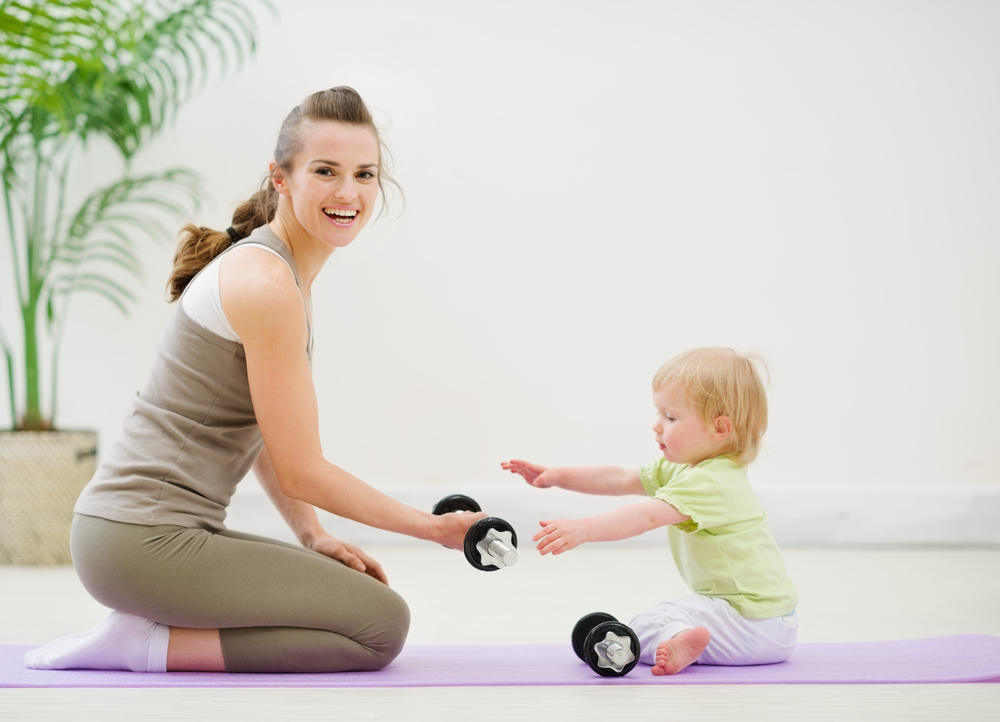Pre and Postnatal fitness expert Jenine Dilts Bayman shares her tips on why it’s important to listen to your body after returning to exercise post birth.
You may have heard the saying “Listen to your Body” when it comes with returning to exercise. But what does that even mean? For most women, returning to exercise after having a baby is a daunting thought. Your body has changed drastically, and movements which may have been easy for you before falling pregnant, may not be possible for some time.
In fact, there are many movements that will need to be modified, yet more often than not, trainers simply do not understand the underlying physiological reasons why modification is necessary. And even those who do, might not be encouraging you to implement these changes correctly.
Listening to your body has never been more important than it is right now, while your baby is small. An injury, combined with needing to care for a young child, is the recipe for a total nightmare.
But how do you listen to your body? And if things don’t feel quite right, what should you say? Firstly, there is a big difference between ‘good pain’ and ‘bad pain’.
Good pain is associated with DOMS – delayed onset muscle soreness, that sometimes intense soreness that reminds you of the workout you completed yesterday! When you’re working out, it might feel like a lingering burning sensation in the muscle group under pressure. It should gradually increase in intensity as your set or session goes on, as lactic acid builds and dissipates throughout your system. Tiny little micro-fibril tears are created in the muscle, which then allows it to repair itself and create increased muscle mass. Good pain equates to more overall tone, an increase in muscle, and results!
Bad pain is associated with injuries of all kinds, but when it first happens you might not realise the severity of what you’ve done. This is why listening to your body throughout your session is so important!
In the moment, you may notice an odd twinge or tweak. You might immediately feel out of symmetry, with one side of your body more sore than the other. You could even hear a pop, or feel a tear. ANY of these signs are a reason to slow down, reassess, and modify your movement, because even if they don’t feel too bad in the moment, they can certainly increase in severity in coming hours or days!
Sure, you might not be able to complete the set, but giving that body part a rest and moving onto something else could prevent short or long term damage.
The hardest part is speaking up! When you feel something odd, stop and talk to your trainer about what you felt and where you felt it. They should then modify the set for you, for example if you were doing an upper body set, they should move you towards a lower body movement instead. Please do not continue to train and pretend you didn’t just feel something!
Training through an injury can do serious damage. It really doesn’t have to feel that bad in the moment, but chances are the pain will increase over time. If you’re in a group class, simply take a rest. The instructor will wonder what’s happened and may be able to come over and assist you to modify movements for the remainder of the class.
The most common areas for injury in Mums are those areas that are weakest.
This includes your core, pelvic floor, knees (due to lessened muscle mass around the joint), wrists, and lower back. No matter how old your child is, if you have not completed a proper recovery program, you may still have issues lingering from pregnancy and child birth! You need to set the foundation strength before progressing to harder movements, which truly means working from the inside out, starting with your deep core abdominals.
If you have no idea what I’m talking about, then you should absolutely be joining the New Mama Lifestyle online program and getting started today! Unfortunately, we are often mislead to believe that crunches and planks are the best way to get your core strength back, since this is what mainstream programs and media showcase. Please
believe me, there are a million other ways you can engage your core, and get results. Completing a crunch before you have healed your abdominal separation, or a plank before your pelvic floor is repaired, can do serious damage. Both of these movements (and many others) place an enormous amount of pressure on your body, and if you have not set the foundation strength, you will almost certainly be causing yourself unnecessary pain and suffering.
There are so many reasons to start slow when returning to exercise after having a baby, and avoiding injury is a big one. By aiming for correct, effective movements, that are progressive in intensity, and seeking expert guidance from someone who specialises in postnatal health, you’ll be setting yourself up for long term, sustainable results.














